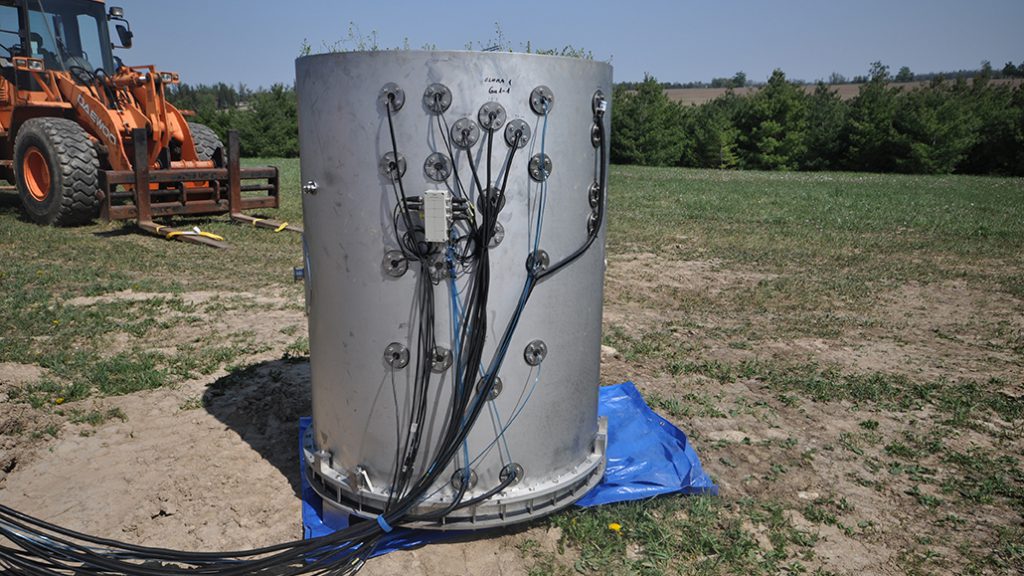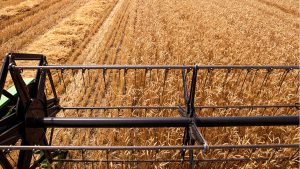Soil Health Interpretive Centre
UNEARTHING THE SECRETS TO SOIL HEALTH

SOILS ARE LIVING ecosystems. And like any living thing, soils need a supply of organic matter to thrive. This message is at the heart of the University of Guelph’s Soil Health Interpretive Centre (SHIC), located at the Elora research station.
To scientists like professor Claudia Wagner-Riddle, soil is more than just dirt. One centimetre of soil takes up to 400 years to form — soil is a finite resource that must be carefully conserved to produce food sustainably, keep water sources clean and mitigate climate change. Half of the world’s topsoil has been lost in the last 150 years, largely due to a lack of knowledge on soils as ecosystems. The SHIC is a place where visitors can learn about general soil science, and witness the groundbreaking work carried out by Wagner-Riddle and her team of soil researchers.
“We’re targeting producers and farmers, and university and high school students to come and learn more about the research that’s going on,” says Wagner-Riddle. “I think soils are something that people take for granted. And if we don’t look after soils we are in trouble in the long term.”
Wagner-Riddle and her team use soil lysimeters — undisturbed soil cores weighing three tonnes each — to explore how improved soil health can benefit farmers and the environment. The soil cores are surrounded by high tech equipment, allowing researchers to monitor water, gases and fertilizers that move in and out of the system.
With increasing soil health, plants and microbes can store more carbon that would otherwise enter the atmosphere and contribute to climate change.
Fortunately, farmers can manage for better soils without high costs and fancy equipment.
DIVERSE CROPS
Diverse vegetation in agricultural soils is key to enhancing soil health. Wagner-Riddle’s team is comparing soil health in lysimeters with conventional corn-soybean-soybean rotations with more diverse cropping systems. Researchers are also experimenting with multi-species cover crop mixtures, including rye, clover, and oilseed radish.
“When farmers manage for improved soil health, it is recommended that crop rotations be diverse. Instead of just growing one crop, you rotate the crops you grow, as well as trying to keep the ground covered all year round with cover crops,” Wagner-Riddle adds. “One of the ideas is that as soil health improves, we will be able to use fewer [chemical] inputs for the same production.”
While scientists, producers, and the public are becoming more aware of the importance of soil health, there is still much to learn.
“What I think could be promoted more is that soil is living; it’s an ecosystem that needs inputs to thrive,” suggests Wagner-Riddle. “We’ve often looked at soil as something that is there to hold plants, and you add nutrients to the soil, fertilizers for example, for the plants to take up. But if soil health is promoted by adding a lot of organic matter, we can decrease our reliance on synthetic fertilizers.”
Wagner-Riddle’s team will be using the data from the soil lysimeter projects to put a monetary value to the environmental benefits of improved soil health.
The Soil Health Interpretive Centre is funded by the OMAFRA-UofG KTT program. Research is partially funded by Grain Farmers of Ontario.
Marika Li is a writer with SPARK (Students Promoting Awareness of Research Knowledge) at the University of Guelph’s Office of Research. For more information, contact a SPARK writer at 519-824-4120, ext. 52667. •











